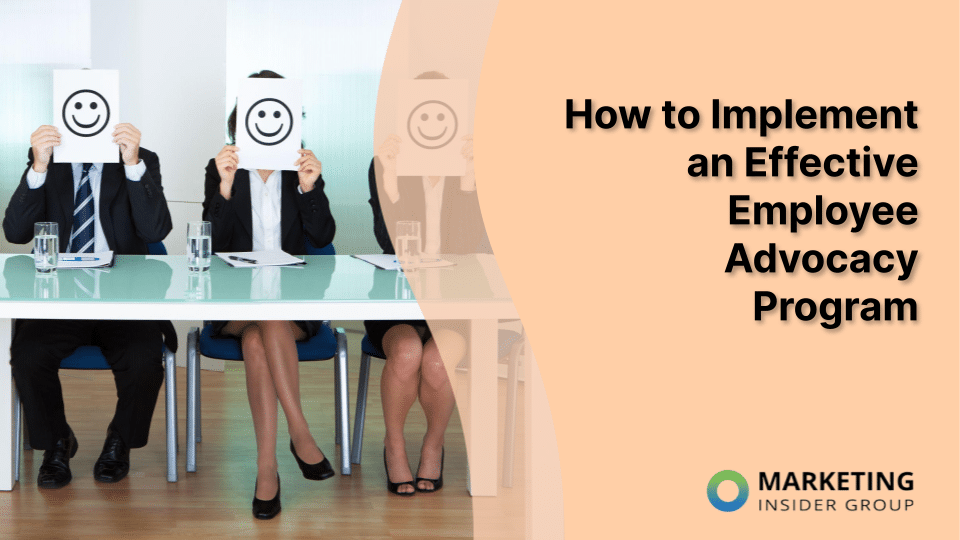
Employee Advocacy: 3 Tips to Help Your Content Distribution Strategy Evolve
It’s an open secret: for many companies, corporate content marketing just isn’t working anymore. They have trouble contending with data privacy laws, social media algorithms, and the public’s general mistrust of sponsored content.
They have trouble reaching an organic audience with an authentic tone by doing what they’ve always been doing.
What does this mean? It means that for companies to succeed with online content marketing, they have to adapt.
They have to change the way they think about content distribution, and who creates it in the first place.
Company social media pages are slowly dying out. Here’s why.
For many businesses, the same obstacles keep appearing when it comes to reaching their desired audience online with fresh content. They include the following:
Data privacy has cut back opportunities. New policies and algorithms on the various social media networks, along with Google Privacy + Sandbox, mean that there are fresh roadblocks to reaching the ideal demographic. Overcoming theses challenges can be as simple as adhering to some of these Employee Advocacy Best Practices.
Consumer mistrust limits organic reach. In the era of social media, individuals increasingly trust the opinions of their online peers more than those that come from large corporations. Re-prioritization of content types, higher engagement rate thresholds, and engagement quality requirements all play a role.
All of which leads toward one inevitable conclusion. Consumers want authenticity. They want real content generated by trusted content creators. The traditional way of reaching them online is no longer effective.
Their expectations have evolved. And companies have to evolve as well. The old “Company Page” with sponsored content just doesn’t cut it anymore.
A new distribution strategy is needed. And employees themselves play the starring role.
Obviously, the traditional distribution strategy has major flaws given today’s online dynamics. According to Marketing Insider Group CEO Michael Brenner, “It’s becoming increasingly difficult to reach people organically on social media. Finding the right audience can be time-consuming, ineffective, and expensive. You’re competing against more and more companies every day. The market is also becoming more saturated as businesses continue publishing new content. That’s why it’s imperative to have a distribution strategy in place that works, which may or may not prioritize social media.”
So if company pages and sponsored posts are out, what forms the backbone of the new distribution channel?
The employees themselves. More specifically, Employee Advocacy. Getting employees directly involved in creating, sharing, and adding insights to content has the following benefits:
Cost effective. When the natural enthusiasm of employees is harnessed via Employee Advocacy, you’re allowing them to share their own thoughts and feelings via content that they create or that they believe in and share. The exposure is generated willingly by them, meaning there are no media fees or ad buys attached.

More authentic. It’s a simple fact, content shared by employees generates 8x more engagement than content shared on brand channels, as noted in the social selling guide. Why? Because consumers trust people they know more than corporations. It’s simply more authentic, more “real.” And this does not go unnoticed by social network algorithms that are designed to promote individual content, while burying corporate content.
Larger organic reach & visibility. Because social networks give priority to content created by individuals, and because individuals will collectively have more followers, brand messaging will go farther and be seen by more people

Employee Advocacy is a solution. But remember these 3 tips.
When employees themselves become brand advocates online, it creates a new content distribution channel, and in doing so, a more authentic, genuine perception of the brand. It builds both trust and awareness. But in starting an Employee Advocacy program, there are three important aspects to keep in mind:
#1. Train and educate employees. Sharing and creating content may not come naturally to many employees. This is why it is crucial to provide training, coupled with an explanation of why Employee Advocacy matters, and how it can benefit their own online professional brand as thought leaders, while also benefiting the company. And it’s important to get top management on board from the beginning, to ensure commitment as well as encouraging leadership by example. If the CEO is sharing on social media, others in the company will follow.
#2. Have a content library. A major roadblock to employee sharing online is that they don’t have pre-approved content at hand that they know they’re allowed to post to their network. Having a content library of high-quality images, videos, and graphics can remove this hurdle and make it easy for employees to share content on a regular basis, as well as create their own using existing elements.
#3. Use gamification to motivate the teams. In short, make it fun! Add a little friendly competition, include rewards for top performers who actively share content, and give badges and ranks to individuals who achieve certain goals. If you can find a platform with gamification and engagement mechanics built in—especially if they’re centered around CSR activities that create a positive impact—even better. And back up those systems with concrete analytics, so all employees can track their development and performance.
Follow these tips, and it will make a big difference in the success of your own Employee Advocacy program, as you adapt your content marketing strategy to reflect the new online reality.
And if you’d like to learn more about Employee Advocacy solutions, you can always contact us at Sociabble. We offer a complete Employee Communication platform with Employee Advocacy features built in, as well as training and consulting services. We’re happy to chat!






